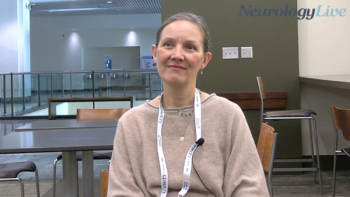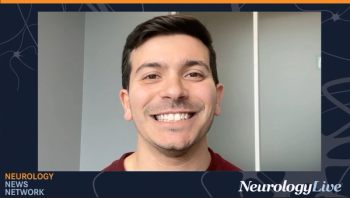
How Exome and Genome Sequencing Are Transforming Neurologic Diagnosis
Anne O’Donnell-Luria, MD, PhD, a practicing clinical geneticist at Boston Children’s Hospital, sat down at CNS 2025 to discuss advances in genomic diagnostics, variant interpretation, and the expanding impact of neurogenetic discovery on clinical practice.
As the field of neurogenetics advances, clinicians are increasingly leveraging comprehensive sequencing technologies to uncover rare and complex causes of neurologic disease. Exome and genome sequencing are now being used more routinely, enabling the identification of novel disease genes and providing greater diagnostic clarity for patients with developmental, neurodegenerative, and neuropsychiatric conditions. These tools are helping to refine patient care, guide treatment strategies, and build deeper connections between research and clinical practice.
At the
NeurologyLive: Can you discuss any new diagnostic tools being used in the field and provide some practical information about them for your colleagues?
Anne O’Donnell-Luria, MD, PhD: The biggest change right now is the widespread adoption of exome and genome sequencing. These tests go beyond gene panels by evaluating the entire coding and noncoding regions of the genome, which improves diagnostic yield for several reasons.
First, exome and genome sequencing are often done as trios, meaning we sequence both parents and the affected child. This helps identify de novo variants and determine whether variants are inherited from 1 or both parents. Second, there are roughly 200 new disease genes discovered every year, which makes it difficult for static panels to stay up to date. Exome and genome sequencing make it easier to revisit data over time and request reanalysis as new discoveries are made, leading to more diagnoses as knowledge advances.
What practical advice would you give to colleagues who may be unfamiliar with this kind of testing but are starting to see its benefits?
About one-third of patients receive reports that include a variant of uncertain significance, or VUS. These results can be challenging, but there are several practical steps clinicians can take.
If the variant is in a gene not yet associated with disease, physicians can register it in Matchmaker Exchange through a program called GeneMatcher. This allows other clinicians or researchers with similar findings to connect and share information, which can help establish new disease-gene relationships.
Clinicians can also look up variants in variant-matching databases. We developed one called Seeker, but there are several interconnected databases available that show whether a variant has been observed in other patients and what conditions were associated. If a variant appears in patients with a very different phenotype, it can often be deprioritized.
Lastly, I recommend that clinicians inform families about GenomeConnect, a patient registry that is part of the ClinGen consortium. Patients can upload their genetic testing reports, and if new information emerges about their variant, the registry will reach out directly to update them and their clinician. This helps maintain contact even if the patient moves or changes providers.
NeurologyLive: I imagine that also helps patients feel more involved in their own care.
Absolutely. It gives families a sense of participation and connection to the research process. Many families have been searching for answers for years, and being part of these registries allows them to contribute to discoveries that may help others while staying informed about their own results.
Have there been any neurological conditions recently identified through these methods that are now being recognized more consistently?
Yes. While we continue to see about 200 new disease genes identified each year, most are quite rare, often affecting 1 in a million people. However, 1 notable example is a condition associated with a small noncoding RNA called RNU4-2. This condition, known as ReNU syndrome, was described only about a year ago and is already estimated to account for roughly 0.4% of patients with intellectual disability or syndromic developmental delay, which is about 1 in 200 individuals.
This discovery has been transformative. ReNU syndrome cannot be detected by exome sequencing and requires genome sequencing. Thousands of families have now received a diagnosis, and we suspect many more remain undiagnosed because their previous tests were not designed to detect this type of variant. This finding also points to an entire new class of small RNA–related disorders that influence how genes are processed, highlighting the need to revisit testing in patients who have had negative or inconclusive results.
Is there anything else you’d like to emphasize from your session?
The main message I want to share is to keep looking. A negative or inconclusive test is not necessarily the end of the road. New technologies are emerging every year, such as long-read sequencing, which can identify variants that short-read sequencing misses, and epigenomic profiling, which examines how DNA modifications affect gene expression.
For clinicians, it is important to stay aware of these advances and to reengage with genetic testing when a patient’s presentation suggests a strong genetic component. As our understanding evolves, reanalysis and retesting can make a meaningful difference for patients and families who have been searching for answers.
Transcript was edited for clarity. Click here for more CNS 2025 coverage.
Newsletter
Keep your finger on the pulse of neurology—subscribe to NeurologyLive for expert interviews, new data, and breakthrough treatment updates.



































